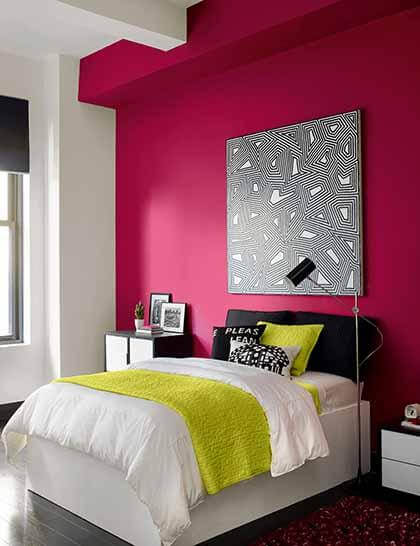By Rita Plush
Back in ancient times the Egyptians and Romans made paint by mixing milk with lye. For binders they used egg yolk or tree gum. Color came from natural ingredients: white from crushed bone or ivory, and black from the soot produced by oil lamps. They painted with their fingers or with brushes made of grass and reeds. Their tomb art lasted for thousands of years.
Though technology has provided more modern ways of manufacturing and applying paint, we don’t expect our efforts to last quite that long. But before you open a bucket of paint and dip your brush, bear in mind that the right kind of prep work can make or break the final effect and prolong the life of your paint job.
Ceilings and higher areas should be painted first, and to protect the lower areas from drips, run blue painter’s tape — easily applied and easily removed — along the top of the baseboards. The spatters can be touched up later. An angled sash or trim brush comes in handy to “cut in” a clean line between the ceiling and the walls. Painter’s tape can also be used to mask the ceiling edge.
As for aesthetics, ceilings painted a lighter hue than walls — a pale blue or off-white if the walls are a medium blue — will open up the room. Crown molding will stand out more if it is painted the same color as the ceiling rather than the color of the walls.
Generally speaking, one coat of tinted primer and one top coat will give good coverage. But when applying a darker color over a lighter color, the surface may need another go with the roller. If you’re using a flat or a matte finish over gloss, sand the wall lightly first to get good adhesion.
The higher the gloss, the tougher the finish, but there’s a downside to that. Paints with a high sheen reflect more light and show more surface imperfections than those with low luster. Save the higher shine finishes for rooms where the walls need to be washed and for doors and windowsills and areas that are going to get a workout.
Test drive before you buy. The two-ounce sample jars of paint many company’s offer take the guesswork out of “Early Sunrise” or “Rosey Glow,” but don’t go “swatch-happy” painting samples all over your walls. Too many choices can confuse rather than simplify your decision.
Once you’ve settled on a color, figure out how much of it you want to use.
Maybe an accent wall will do the trick? A quick and inexpensive way to make a room say “Hello,” an accent wall becomes the room’s focus, adding depth and interest to an otherwise ordinary space or layout.
If your bedroom walls are a chilly white, pull out your rebel palette and heat them up with a pop of hot pink behind the headboard. Go for the painter’s tape to get a crisp finished edge between the adjacent walls.
Paint like a pro. Your walls will thank you.
Rita Plush is an interior designer and coordinator of the Interior Design/Decorating Program at Queensborough Community College.


































